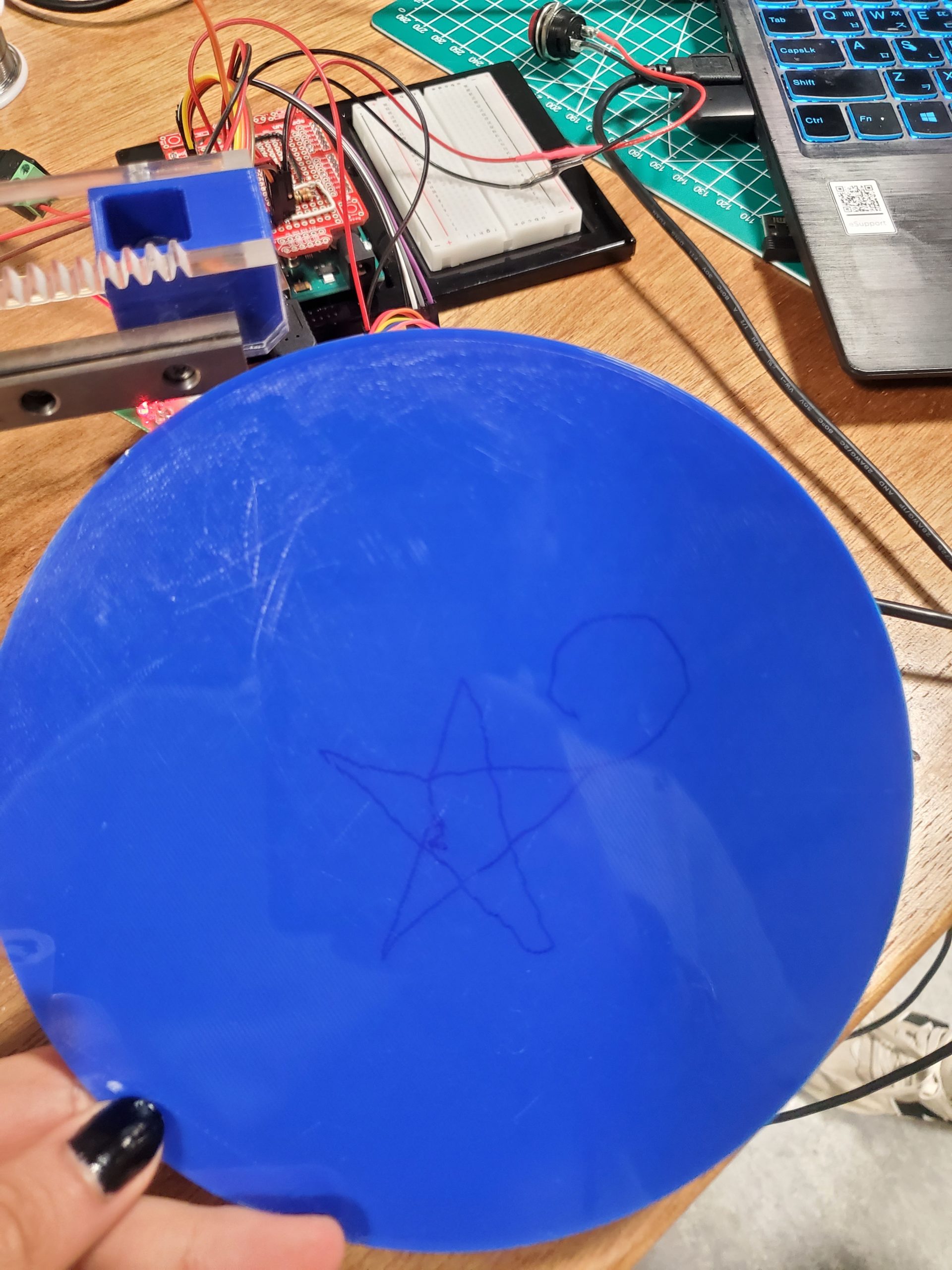Progress
Following our last blog post, we (Samyam and Tim) are almost done with the project. The project was divided into three different major components:
-
- Building Hardware
- p5.js component
- Arduino component
After assembling the 3D printed and laser-cut pieces with motors, we have made some changes in the p5.js component – it has been adjusted so that the latency in data transfer does not affect the bidirectional communication between p5.js and the Arduino. In the same way, the Arduino code has been modified to facilitate smooth communication between those two components. Once the user clicks the SEND DATA button, p5.js sends data to the drawing arm via the Arduino, which in return sends a confirmation message to p5.js; this way, p5.js knows when to send the next message. In the meantime, the physical arm keeps on drawing the sketch. When all the data are sent from p5.js, the completed sketch can be found on the base plate of the platform.
User Testing
Here, after setting up the device, we draw a sketch of a star with a curved hook on one edge. Once the user clicks on SEND DATA button, mapped coordinates (mapped to polar coordinates) are relayed to the Arduino, and the sketch is drawn on the plate. The progress of the sketch can be tracked using the p5.js console, where the completion percentage as well as the coordinates transferred are displayed.
Find the user-testing video here along with the final sketch drawn on the plate.
The completed sketch:

Future Plans
The device is functional and working as expected. Thus, we plan on further enhancing the hardware as well as software components of the project. The time the device takes to complete the sketch immensely depends on the complexity of the sketch, thus our plan is to improvise its performance as much as possible. In addition, the base plate will be re-engineered so that the user can place a paper for better visibility of the final sketch.
